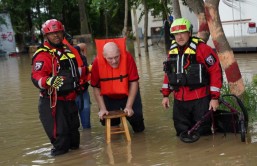NASA's Lunar Atmosphere and Dust Environment Explorer (LADEE) is expected to impact the moon's surface by April 21.
Its mission is to answer the scientists' question for years: Was lunar dust responsible for the pre-sunrise glow detected during various Apollo missions above the moon's atmosphere?
LADEE, the first deep-space spacecraft designed and built inside NASA's Ames Research Center, will reach the moon's surface before the month ends. On April 11, LADEE will do its last orbital maintenance manoeuvre before the total lunar eclipse happens on April 15. During the eclipse, the earth's shadow will pass over the moon for about four hours. It will expose this vending machine-sized spacecraft under extreme conditions.
"The moon's gravity field is so lumpy, and the terrain is so highly variable with crater ridges and valleys that frequent maneuvers are required or the LADEE spacecraft will impact the moon's surface," Butler Hine, LADEE's project manager, said in a press release.
"Even if we perform all maneuvers perfectly, there's still a chance LADEE could impact the moon sometime before April 21, which is when we expect LADEE's orbit to naturally decay after using all the fuel onboard, "he added.
LADEEhas been orbiting the moon a month after it was launched on September 6, 2013. On November 20, it entered its science orbit along the moon's equator. Since, it has been acquiring useful information on the study of structure and composition of the thin lunar atmosphere. The mission will also test several new technologies that may reduce the cost of future space missions and demonstrate laser communication for the first time from the Moon.
The exact date and time of impact is not yet certain as they depend on several factors.
Researchers say that it is important to study the moon and other celestial neighbors in order to understand other existing bodies in the solar system.








